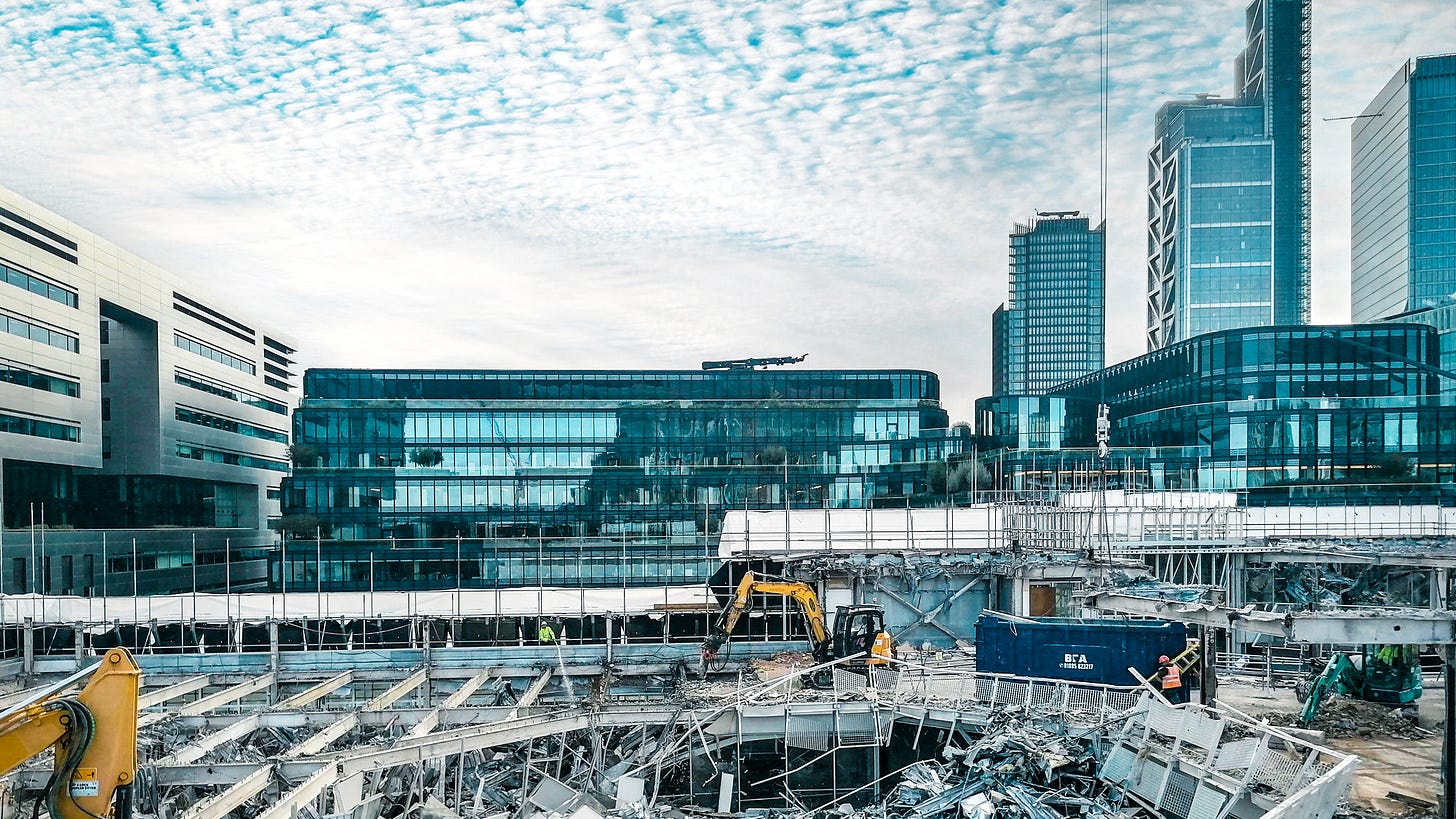1 Broadgate
How the project team have driven high levels of material reuse
After hearing about the steel from 1 Broadgate being extracted during demolition and sold to another developer to be used in other London project, I went to visit Sir Robert McAlpine’s site and learn a bit more.
139 tonnes of structural steel from British Land’s 1 Broadgate project was bought by property investment and development business, Fabrix. The steel is to be used on their 55 Great Suffolk Street and Roots in the Sky - Blackfriars Crown Court projects, both in London’s Southwark district. The projects are estimated to complete in Q2 2023 and Q3 2025 respectively.
What is clear from looking at this example is that both projects need to be as committed as each other to make this happen. On the demolition side at 1 Broadgate, there is a team aiming for zero waste to go to landfill and with heavy focus on trying to find reuse solutions (buyers or takers) for the material rather than just recycling. Whilst on the Fabrix side, there is a team of designers, fabricators and project managers figuring out how to use second-hand steel in their Client’s new buildings.
For me, this further reinforces that for larger scale material reuse to happen in our industry, the direct link of ‘project A to project B’ should be severed - instead, project A feeds a material exchange, or pool, from which project B would review the inventory and secure the stock it requires. This would result in a much more liquid market, where designers are able to select from a wider ranger of second-hand material. It should also reduce storage challenges and the likelihood that despite any good intentions if the perfect donor project doesn’t present itself then material reuse might not happen.
Back to the 139 tonnes. In the scheme of the two Fabrix projects this is still relatively minimal, but this is the start and should be seen as a proof of the concept. I absolutely commend all three project teams and both clients, who I encourage to share more detail as a case study for others to learn from.
For anyone thinking about doing this on their project, the British Constructional Steelwork Association (BCSA) has recently published the 1st edition of the Sustainability Specification (Annex J) for structural steelwork for building construction, including sections on project specification requirements for sustainability and reusing structural steel. BCSA are behind the National Structural Steelwork Specification (NSSS), so this is key for the sector.
Key members of the consultant team behind this fantastic effort are listed by Fabrix as AKT II, Symmetrys Structural and Civil Engineers, Gardiner & Theobald LLP, Quantem, Cantillon Limited and Cleveland Steel & Tubes Ltd.
On 1 Broadgate, the team have produced a YouTube video on their circular economy work, which is linked below (or see website here). Well done to Simon at Sir Robert McAlpine and to both Lawrence and Elpida at Cantillon. They explain how they undertook pre-demolition audits and specific circular economy workshops to explore opportunities for maximising the value of materials in the existing building. As well as the structural steel, they also sent back over 30,000 raised access floor tiles, reused the granite facade in new terrazzo flooring and repurposed doors into benches and tables in the site welfare.
In the future, I hope to see more examples like this, with even more materials being reused and kept higher up their value chain.
Sources:
LinkedIn Post by Sir Robert McAlpine




